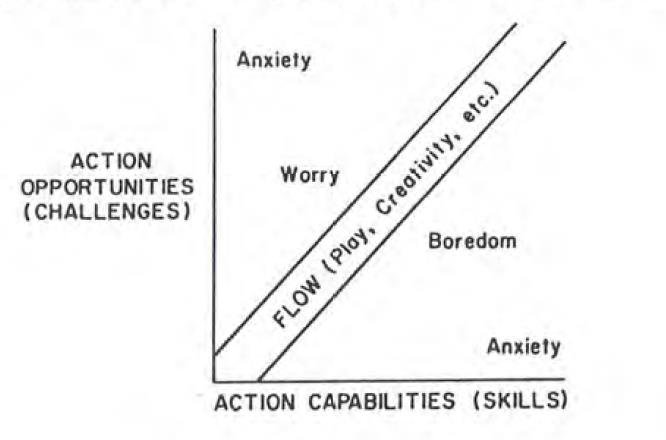Have you ever felt so compelled with a task that you forgot to have lunch or forgot to call your spouse? Have you ever been in a state that you were so thrilled with the work that you forgot the time and space?
And if you have experienced it and self-reflected on it, then probably you know what I am talking about and you understand the thrill that state brings. This state is what Mihály Csíkszentmihályi termed as Flow State. He describes this state as a state of complete immersion in an activity. Flow is a state of mind in which a person becomes fully immersed in an activity. While in this mental state, people are completely involved and focused on what they are doing.
“The best moments in our lives are not the passive, receptive, relaxing times . . . The best moments usually occur if a person’s body or mind is stretched to its limits in a voluntary effort to accomplish something difficult and worthwhile” – Mihály Csíkszentmihályi
Flow experiences can occur in different ways for different people. It often occurs when you are doing something that you enjoy and in which you are quite skilled. This state is often associated with the creative arts such as painting, drawing, or writing. However, it can also occur while engaging in a sport, such as skiing, tennis, soccer, dancing, or running.
If you are a true engineer and get this state while coding then we would like to hire you for sure.

Flow is associated with subjective well-being, satisfaction with life, and general happiness. At work, it’s linked to productivity, motivation, and company loyalty.
Today’s work culture needs to understand this state of their team and try to unlock the flow state for them. We live in a world full of distractions – our working lives are full of meetings, phone calls, email, and open-plan offices; at home, media, notifications, and the internet make achieving our goals tricky unless we can fully focus on them. According to one study, it takes people 23 minutes and 15 seconds on average to refocus after a distraction – that’s a lot of potential lost time that is costing businesses a significant amount of productivity. And while you may be able to eliminate some distractions in the short term, like having a silent phone policy in the office, what will truly allow your team to focus is to help them achieve a flow state. Achieving flow for a team can be a difficult task, but we can start with baby steps like; uncovering their motivations, ensuring mindfulness, setting clear attainable goals, maintaining a balance between skill level and challenges, etc.
Some people may be naturally prone to flow – especially those who score high on personality tests for conscientiousness and openness to experience, and low on measures of neuroticism. But if you don’t experience flow every day, can you find a way to trigger it?
It’s important to note that one can’t experience flow if distractions disrupt the experience. Thus, to experience this state, one has to stay away from the attention-robbers common in modern fast-paced life. A first step would be to turn off your smartphone when seeking flow.
“Inducing flow is about the balance between the level of skill and the size of the challenge at hand”
Achieving a state of flow can be a great way to make the activities you pursue more engaging and enjoyable. Not only do people often perform better when they are in this state of flow, but they are also often able to improve their skills in that area. Fortunately, it is also a skill you can learn to achieve with practice.
It is important to remember that flow is a dynamic and ever-changing state. As your skill levels increase, you will need to continue to adjust the level of challenge that is needed to help initiate a state of flow.
References:
https://positivepsychology.com/mihaly-csikszentmihalyi-father-of-flow/
https://www.bbc.com/worklife/article/20190204-how-to-find-your-flow-state-to-be-peak-creativ